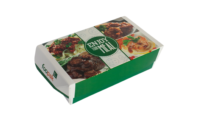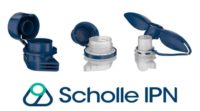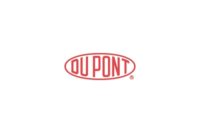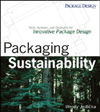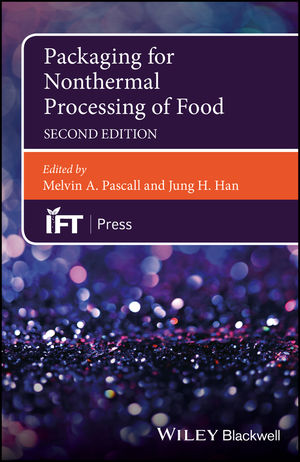Packaging is a significant portion of a food processor's expense. This makes using the right packaging even more important for mid-sized processors. Given today’s eco-conscious consumers, the demands of day-to-day operations, working capital pressures and strained internal resources, the package must be optimized for the specific operation and application. When selecting packaging, opting for a stock solution or the product with the lowest price could be an expensive decision. Food packaging should work for the food processor’s product, customers and their business.
Mid-sized food processors typically don’t have in-house technical, engineering or design expertise to keep up with market demands. For this reason, it’s not uncommon for product to drive the packaging decision. While this approach may take care of the more basic packaging needs, it may forfeit benefits realized by packaging that extends shelf-life, enhances usability for consumers, improves efficiencies in the packaging process and maximizes shelf impact.
Using packaging not optimized for your application can lead to costly over-packaging, packaging line inefficiencies, damage, contamination, leakers, premature spoilage, poor shelf impact, safety issues, and negative consumer perception and satisfaction.
Packaging redesign and reengineering can improve your entire packaging supply chain, bringing new efficiencies to the packaging operation.
Food Package Engineering and Design
Food packaging engineers and designers work with food processors to identify the packaging ideally suited to the product, consumer expectations and operating parameters within the business. Determining the right packaging begins with understanding needs, among them:
- The food being packaged. Is it frozen or fresh, prepared or not, raw, or cooked?
- The type of equipment used to package the product.
- How the package will be sealed.
- How the product is used or prepared for use. For example, will the product be cooked in the package? Is it ready-to-eat?
- Packaging printing requirements. Colors and image detail requirements. What is the best type of printing for this package — rotogravure, flexographic or digital?
- The level of barrier needed to keep the food, safely preserved and tasting its best.
- The processor’s marketing objectives and their customers’ expectations.
A food packaging engineer evaluates the current packaging for opportunities for improved efficiency, protection, customer satisfaction and savings by determining if the current packaging:
- Is over or underperforming.
- Is the correct thickness (mil) and construction for the application.
- Is the right size and dimension.
- Works well with the processor’s packaging equipment.
- Sufficiently limits spoilage rates.
- Can be changed to reduce total cost.
- Can be improved to enhance sales and case/shelf performance.
Food packaging engineers identify and address potential problem areas including:
- Oxidation
- Growth of spoilage organisms
- Moisture
- Seal integrity
- Puncture resistance
- Optimize machine throughput
- Transit and handling concerns
With this information, food packaging engineers can determine the right packaging for the application.
More Than an Optimized Package
The benefits of reengineering and redesign can extend well beyond the package itself. Redesign can result in far more than lower direct costs and reduced waste. Improvements in freshness, operational efficiencies, and brand perception yield both savings and working capital improvements.
As a case in point: A processor was experiencing sealing problems with bags used to package its products. The bags were tearing in transit and were too long, creating a lot of waste and scrap in the packaging process. These problems resulted in food waste, packaging waste and replacement costs that were impacting financial statements and customer perception.
SupplyOne Packaging Engineers identified a bag with better sealing properties, machinability and tear resistance. The company right-sized the packaging to a smaller format, eliminating excess space surrounding the product and improving its quality. In addition to direct cost savings achieved through the smaller package, the company was able to speed up its production line, reduce waste, increase quality, reduce its packaging spend and enhance customer perception.
While cost is a critical factor for packaging materials, sometimes a higher-cost material can lead to significant savings that far outweigh the savings achieved by purchasing an unoptimized, stock product.
For example, a meat packer was using a metalized film to package its ground meats. The film's metal content forced the manufacturer to set its metal detector at a lower-than-ideal sensitivity level to minimize disruption in the packaging process. This created a risk the metal sensor would miss contaminants in the meat. SupplyOne packaging engineers identified a metalized alternative that eliminated the problem without sacrificing the look of the package. While the new film costs more, it increased production efficiency, reduced the risk of sending a contaminated and potentially harmful product out the door, and mitigated potential damage to its brand.
_1170x658.jpg?1679335192)
